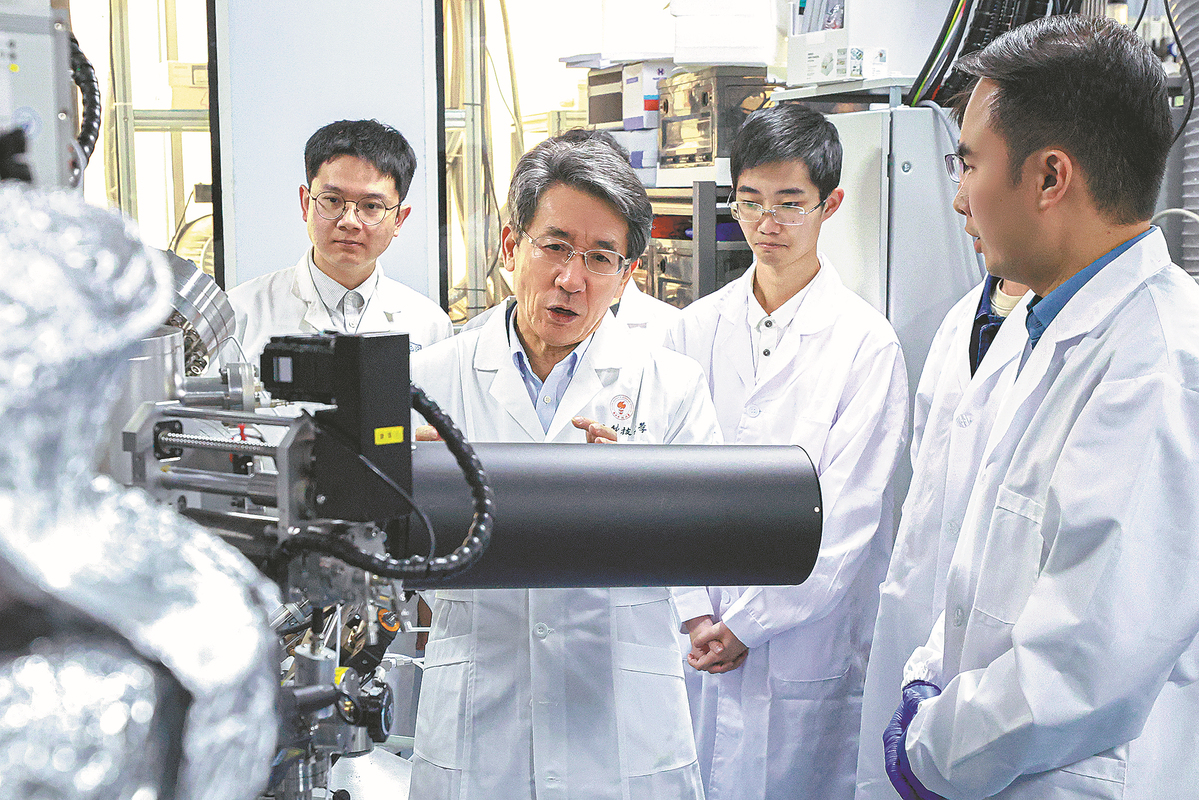
Xue Qikun (center), an academician of the Chinese Academy of Sciences, and his team conduct superconductivity research at a laboratory. [Photo/Xinhua]
SHENZHEN — A joint research team from the Southern University of Science and Technology and other Chinese institutions has developed a new type of high-temperature superconductor at ambient pressure, achieving a breakthrough in superconductivity research.
According to a research paper published on Tuesday in the journal Nature, a team consisting of members from SUSTech, the Quantum Science Center of the Guangdong-Hong Kong-Macao Greater Bay Area and Tsinghua University reported nickelate superconductivity under ambient pressure, with an onset transition temperature that exceeds 40 Kelvin, which is about — 233 C, alongside the existence of definitive evidence of zero electrical resistance and the expulsion of magnetic fields.
The discovery establishes nickelate materials as the third class of high-temperature superconductors, following cuprates and iron-based systems, capable of operating in ambient conditions. The study also sheds light on the enigma of high-temperature superconductivity mechanisms.
Initial studies in 2019 revealed superconductivity in infinite-layer nickelate films, though at temperatures much lower than 40 K. A study in 2023 led by Chinese scientists achieved superconductivity in bilayer nickelates under pressures exceeding 100,000 atmospheres.
Notably, realizing high-temperature superconductivity under ambient conditions has become a major goal for researchers worldwide.
Xinhua